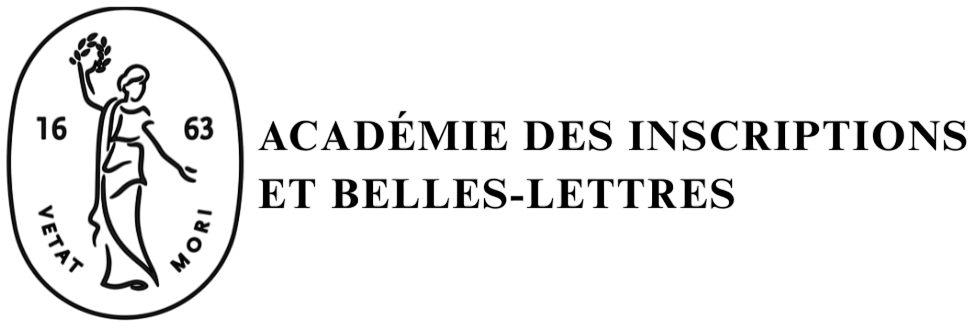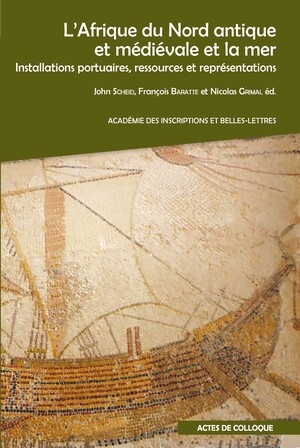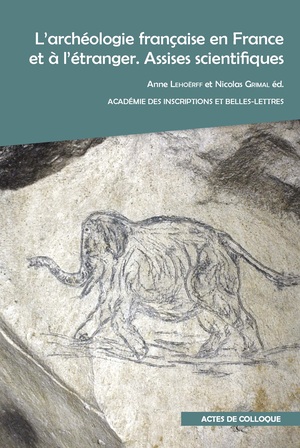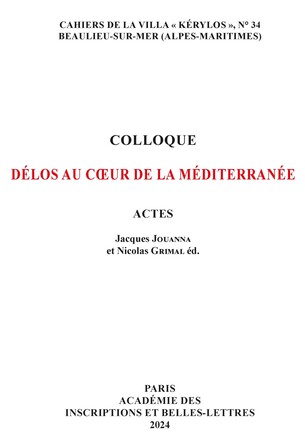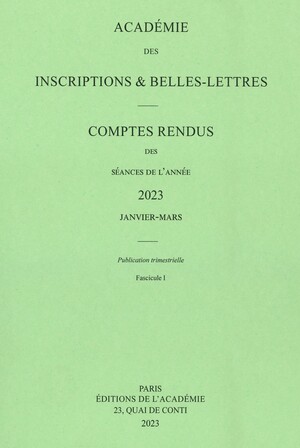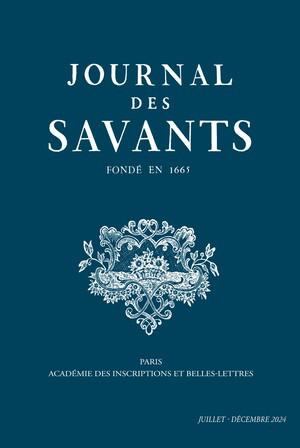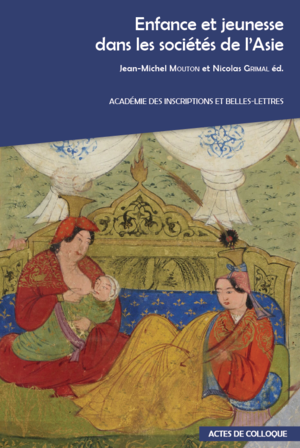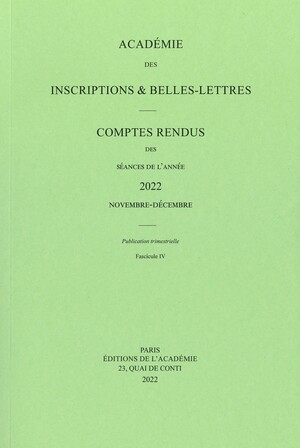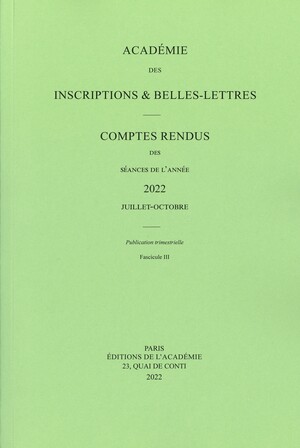Publications Archivum Latinitatis Medii Aevi, 78, 2020
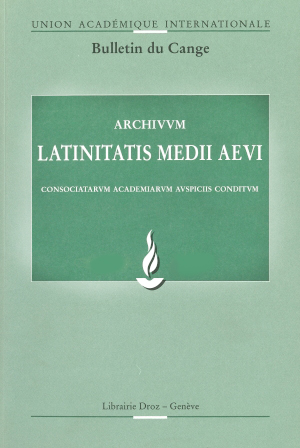
Archivum Latinitatis Medii Aevi, 78, 2020
Date : 2020
337 pages.
Pour se procurer ces périodiques :
Librairie Droz, 11 rue Massot Case Postale 389
1211 Genève 12 – Suisse
Tél : +41 22 346 66 66 ; Fax : +41 22 347 23 91
Site : www.droz.org
Courriel : droz@droz.org
Présentation
Résumés du t. 78 (2020)
2 – Articles et notes
Steinová Evina, Annotation of the Etymologiae of Isidore of Seville in Its Early Medieval Context, p. 5-81
Abstract. — This article provides an overview of the annotated pre-1200 manuscripts of the Etymologiae of Isidore of Seville and discusses the nature and character of the annotation of this work. It shows that the Etymologiae was annotated principally in the early Middle Ages. The glossing took place in three contexts: in the insular world, perhaps in the aftermath of the arrival of Isidore’s encyclopaedia in Ireland; in Carolingian northern France as a result of the introduction of Etym. I (De grammatica) into schools; and by scholarly readers in pre-Carolingian, Carolingian and Ottonian northern Italy. To a lesser extent, the Etymologiae was also annotated in the German area and northern Spain. The three main strains of annotation can be discerned because of their interest in different sections of the Etymologiae and because of distinct patterns of glossing they left behind. The intermixing of the three strains was exceptionally limited. The only region where it is attested is Brittany. The differences between regions and the limited circulation of glosses beyond their region of origin suggest that there existed several distinct reception frameworks for the Etymologiae in the early Middle Ages. The article is accompanied by a list of 45 most important annotated pre-1200 manuscripts of the Etymologiae.
Résumé. — Cet article propose un inventaire des manuscrits annotés des Etymologies d’Isidore de Séville antérieurs à 1200. Il commente la nature et le contenu des annotations, en montrant que les Etymologies ont été surtout annotées pendant la période du haut Moyen Âge. On distingue trois contextes d’annotation différents: le monde insulaire, peut-être dans le sillage de l’introduction de cette encyclopédie d’Isidore en Irlande; la France du Nord carolingienne, après l’introduction dans les écoles du De grammatica (Etymologies I) ; et les érudits d’Italie du Nord pré-carolingienne et carolingienne. Dans une moindre mesure, les Etymologies furent aussi annotées dans l’espace germanique et l’Espagne septentrionale. Les trois principaux contextes d’annotation se distinguent les uns des autres par leur intérêt pour des sections différentes des Etymologies et par des manières d’annoter différentes. Les interconnexions entre ces trois courants d’annotations sont très limitées. La seule région où un réel mélange se produit est la Bretagne. Les différences régionales et la circulation limitée des gloses hors de leur région d’origine laissent penser qu’il existait plusieurs formes de réception différentes des Etymologies au haut Moyen Âge. Cet article comporte une liste des 45 manuscrits annotés des Etymologies antérieurs à 1200 les plus importants.
Declercq Georges, Voir ou lire ? Note sur le sens du verbe videre dans les souscriptions de chartes, p. 83-92
Résumé. — Selon Paul Saenger la pratique de la lecture silencieuse est une conséquence directe de la séparation des mots, introduite par des scribes insulaires dès le viie siècle. Cette innovation aurait également eu des répercussions sur le vocabulaire de la lecture. Paul Saenger pense notamment que le verbe videre serait devenu un synonyme de legere. Parmi les exemples qu’il cite figure la formule « vidi et notavi » utilisée dans les souscriptions de chartes à l’abbaye Saint-Pierre de Gand au xie siècle. L’objectif de ce bref article est de montrer que cette interprétation n’est pas justifiée et que le verbe videre a gardé son sens classique de voir dans les souscriptions de chartes.
Abstract. — According to Paul Saenger the pratice of reading silently is a direct consequence of the introduction of word separation by insular scribes in the seventh century. This innovation is believed to have also had an impact on the vocabulary of reading. Paul Saenger thinks more in particular that the verb videre became a synonym of legere. Among the examples he cites is the formula «vidi et notavi» used in the subscription of charters at St Peter’s Abbey in Ghent in the eleventh century. The aim of this short article is to show that this interpretation is not warranted and that the verb videre continued to have the traditional meaning ‘to see’ in the subscription of charters.
Adámková Iva, Zur Bedeutung des lateinischen Terminus debuxaturis im Liber Sancti Jacobi (Jakobsbuch), p. 93-102
Zusammenfassung. — Der Beitrag widmet sich der lateinischen Schrift Liber Sancti Jacobi und richtet sein besonderes Augenmerk auf die Passagen, die das Ziborium des St. Jakobus-Altars beschreiben. Im Rahmen seiner Schilderung verwendet der Autor in dem lateinischen Text den Begriff debuxaturis, zu dem es nirgends Parallelen gibt. Daher bemüht sich dieser Beitrag um eine Begriffsdeutung – vor allem im Kontext der (romanischen) Vernakularsprachen. Mithilfe der Entwicklung der romanischen Sprachen als breiteren Bezugsrahmen bietet dieser Beitrag die Möglichkeit einer besseren Kontextualisierung dieses Begriffs. Gleichzeitig verhilft er zu einer genaueren Definition der herangezogenen Kunsttechniken bei diesem Teil der Ausschmückung des Apostelaltars in Santiago de Compostela aus dem 12. Jahrhundert.
Abstract. — The contribution discusses the Latin Liber Sancti Jacobi, especially the passage about the ciborium over the altar of St. James. When describing the decorations of this part, the author of the Latin text used the term debuxaturis which cannot be found anywhere else. The contribution attempts to interpret the word primarily in relation to vernacular (romance) languages. The term is placed in the wider context of the development of romance languages, leading to a more precise identification of the technology used in producing this part of the decoration of the altar in Santiago de Com- postela in the 12th century.
Bartoli Elisabetta, La Compendiosa doctrina nella tradizione teorica delle epistole formate, p. 103-129
Riassunto. — Questo contributo è dedicato all’edizione commentata della Compendiosa doctrina, una breve ars dictandi anonima del secolo xii (tradita dal ms. Verona, Biblioteca Capitolare CCLXII, 234) che verte sulla composizione di lettere formate. L’analisi dell’ambiente storico e artigrafico, oltre che del contesto codicologico dell’articella, permettono di formulare qualche ipotesi sulla sua composizione e di collegarla con importanti raccolte epistolari (in particolare la Lombardische Briefsammlung) e maestri attivi nel xii secolo. Questo studio prende tuttavia le mosse dall’elemento di maggiore interesse della Compendiosa – la teoria della redazione dell’epistola formata – propo- nendo una disamina che ne metta in luce la collocazione all’interno del sottoinsieme di artes che affrontano questo stesso argomento. Preliminarmente, quindi, verrà ricostruita in breve la tradizione dittaminale delle formate con lo scopo di rendere perspicui i motivi che inducono i dettatori a soffermarsi in sede teorica, fino al 1200, su argomenti già desueti nella prassi alla nascita dell’epistolografia.
Abstract. — This paper contains the critical edition of the Compendiosa doctrina, a short anonymous ars dictandi of xiith century (preserved in Manuscript Verona, Biblioteca Capitolare CCLXII, 234) that focuses on the composition of the formed letters. The analysis of the historical and rhetorical environment, as well as of the codicological context of the small treatise, allow us to formulate some hypotheses on its composition and to connect it with important epistolary collections (in particular the Lombardische Briefsammlung) and masters active in the twelfth century. This study, however, starts from the element of greatest interest in the Compendiosa – the theory of the formed epistle – proposing an examination that highlights its place within the subset of the artas that adress this same topic. Preliminarily, therefore, the rhetorical tradition of the formed letters will be briefly reconstructed with the aim of making the reasons that induce the dictatores to dwell in theory, still in the mid-twelfth century, on topics already obsolete at the birth of the epistolography (end of xith century).
Franzoni Silverio, Florilegium, anthologia. Appunti per la storia di due termini gemelli, p. 131-187
Riassunto. — È noto che i termini latini florilegium e anthologia compaiono soltanto in epoca moderna, ma le loro origini non sono mai state indagate in maniera approfondita. Le esplorazioni proposte in questo articolo offrono un tentativo di precisare queste origini, collocando più saldamente le prime attestazioni dei due vocaboli all’inizio del xvi secolo. Si presentano inoltre, come premessa all’indagine, un breve profilo storico e bibliografico della letteratura di compilazione greca e latina in epoca antica e tardoantica e una sintetica analisi del lessico latino antico impiegato in quest’ambito.
Résumé. — On sait que les termes latins florilegium et anthologia n’apparaissent qu’à l’époque moderne, mais leurs origines n’ont jamais fait l’objet d’une enquête fouillée. Les explorations proposées dans cet article offrent une tentative de préciser ces origines, en plaçant plus fermement les premières attestations des deux mots au début du xvie siècle. On présente en outre, comme prémisse à l’enquête, un bref tableau historique et bibliographique de la littérature de compilation grecque et latine à l’époque antique et tardo-antique et une analyse succincte du lexique latin ancien employé en ce domaine.
Abstract. — It is already known that the Latin words florilegium and anthologia appear only in modern times, but their origins have never been enquired in a detailed fashion. The explorations put forth in this paper offer an attempt to precise these origins, placing more firmly the first occurences of the two terms at the beginning of the 16th century. Moreover, as a preamble to the enquiry, we offer a short historical and bibliographical outline of Greek and Latin compilations in ancient and late-antique literature and a concise analysis of the ancient Latin vocabulary employed in this field.
Laneri Maria Teresa, Uno sconosciuto trattato ortografico di Giorgio Valla: il De recto modo scribendi liber (ante 1469), p. 189-210
Riassunto. — L’articolo presenta un trattato di ortografia latina di Giorgio Valla rimasto finora sconosciuto. Questo scritto è giunto in due versioni, ciascuna attestata da un solo testimone: il ms. Schlägl, Cpl. 153 e il ms. Toledo, BCT 99-29. Dopo una descrizione dei codici, se ne analizza il contenuto partendo da un confronto con la successiva e assai più breve opera a stampa dello stesso autore: il De ratione scribendi. Il nucleo del lavoro è costituito dall’esame delle due versioni manoscritte, con particolare attenzione all’atteggiamento dell’autore nell’affrontare la materia, alle fonti e alla diversa destinazione. Il codice di Schlägl si dimostrerà infatti la copia di un testo approntato da Valla per i suoi studenti, fatta probabilmente eseguire da Giovanni di Rabenstein; il codice di Toledo una revisione corretta e ampliata di quel testo, che Valla allestì per farne dono al conte Giovanni Attendolo Bolognini.
Abstract. — The article presents a treatise on Latin spelling by Giorgio Valla hitherto unknown to scholars. This treatise has come down to us in two version, each one certified by just one witness: the Schlägl, ms. Cpl. 153 and the Toledo, ms. BCT 99-29. After a description of the two codexes, the content is analysed, starting from a comparison with the latter and much shorter printed work by the same author: the De ratione scribendi. The core of the work consists of an examination of the two manuscript versions, with special attention to the author’s attitude towards the subject matter, the sources used, and the different target readership. The Schlägl codex is the copy of a text prepared by Valla for his students, probably carried out by Johann von Rabenstein, while the Toledo codex is an extended and corrected revision of that text, which Valla prepared as a gift to Count Giovanni Attendolo Bolognini.
1 – Projets
Roelli Philipp, Neue Wörter für neue Dinge im Neustlatein (19. bis 21. Jh.), p. 287-303
Zusammenfassung. — Solange eine Sprache, die nicht mehr als Muttersprache gelernt wird, fixiert zum weitverbreiteten intellektuellen Gebrauch in einer Gesellschaft weiterlebt, findet sie problemlos Strategien neue Dinge zu benennen (genauso wie lebendige Sprachen). Für Latein ist dieser Zustand in Mittelalter gut bekannt und erforscht. Doch was geschieht, wenn die fixierte Sprache nur mehr in immer weniger gesellschaftlichen Nischen Verwendung findet, wie dies mit Latein ab dem 19. Jh. passiert? In diesem Beitrag werden Stichproben der Wortbildung aus drei Bereichen analysiert um diese Frage anzugehen: ein Sample von vier Doktorarbeiten des 19. Jhs., ein jesuitisches Philosophielehrbuch des 20. Jhs., sowie das Latein der heutigen Vicipaedia. Die gefundenen vorher nicht attestierten Wörter werden mit den Wortbildungsregeln zeitgenös- sischer ciceronianischer Antibarbari verglichen. Es zeigt sich, dass ein pragmatisches Vorgehen, das aber oft gegen die Antibarbarusregeln verstößt, lateinische Kommunikation auch in gänzlich neuartigen Themenbereichen problemlos möglich machte und diese auch heute durchaus noch in substantiellem Umfang erfolgreich betrieben wird. Dabei werden oft griechische Wortbestandteile, neue Komposita und Suffixbildungen verwendet um neue Wörter zu bilden.
Abstract. — While a language that is no longer learned as a mother tongue lives on as a fixed language for widespread intellectual use in a society, it easily finds strategies to name new things (just like living languages). For Latin, this condition is well-known and studied in the Middle Ages. But what happens when a fixed language retires to ever fewer social island niches, as happened with Latin from the 19th century onward? Small samples of word formation from three areas are analysed to approach this question: one composed of four 19th century doctoral theses, one of a 20th century Jesuit philosophy textbook, and one made up of today’s Latin Vicipaedia. Previously unattested words are sought and compared with the word formation rules of contemporary Ciceronian Antibarbarus text-books. It becomes apparent that a pragmatic approach, which, however, often violates the Antibarbarus rules, made Latin communication easily possible, even in completely new subject areas. Indeed, such Latin communication is still successfully practiced to a substantial extent today. Greek word components, new compounds, and suffix formations are typically used to form the new words.
